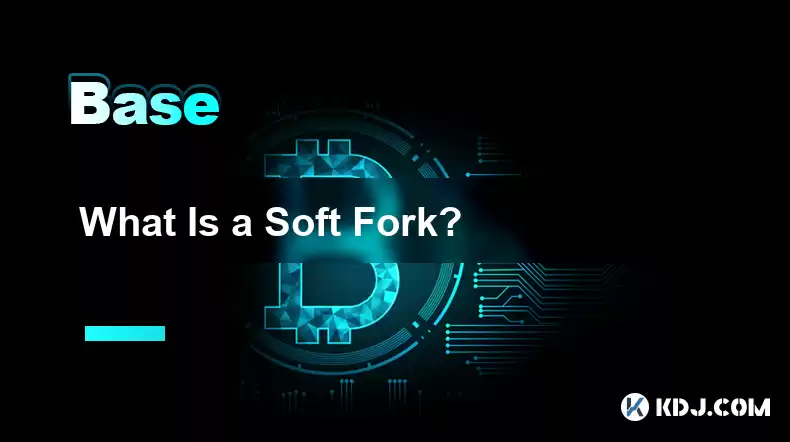-
 Bitcoin
Bitcoin $115000
0.12% -
 Ethereum
Ethereum $3701
4.50% -
 XRP
XRP $3.081
2.99% -
 Tether USDt
Tether USDt $0.0000
-0.01% -
 BNB
BNB $767.9
1.45% -
 Solana
Solana $169.5
3.13% -
 USDC
USDC $0.9999
0.01% -
 Dogecoin
Dogecoin $0.2106
4.30% -
 TRON
TRON $0.3334
1.62% -
 Cardano
Cardano $0.7564
2.54% -
 Stellar
Stellar $0.4165
0.76% -
 Hyperliquid
Hyperliquid $38.75
0.25% -
 Sui
Sui $3.593
3.00% -
 Chainlink
Chainlink $17.08
3.59% -
 Bitcoin Cash
Bitcoin Cash $573.6
4.35% -
 Hedera
Hedera $0.2508
-0.84% -
 Avalanche
Avalanche $23.07
6.46% -
 Ethena USDe
Ethena USDe $1.001
-0.02% -
 Litecoin
Litecoin $120.8
8.17% -
 UNUS SED LEO
UNUS SED LEO $8.943
-0.32% -
 Toncoin
Toncoin $3.400
-5.60% -
 Shiba Inu
Shiba Inu $0.00001255
1.54% -
 Uniswap
Uniswap $9.908
6.32% -
 Polkadot
Polkadot $3.718
2.10% -
 Monero
Monero $303.0
-0.74% -
 Dai
Dai $0.9999
-0.02% -
 Bitget Token
Bitget Token $4.392
0.91% -
 Cronos
Cronos $0.1403
6.31% -
 Pepe
Pepe $0.00001076
1.13% -
 Aave
Aave $267.2
1.80%
What Is a Soft Fork?
Soft forks, unlike hard forks, preserve the validity of prior transactions and make gradual changes to blockchain protocols without causing network disruptions or splintering.
Dec 17, 2024 at 11:12 pm

Key Points:
- Definition and Purpose of Soft Forks
- Process of Implementing a Soft Fork
- Advantages and Disadvantages of Soft Forks
- Notable Soft Forks in Cryptocurrency History
- Comparison to Hard Forks
- FAQs (Frequently Asked Questions)
What Is a Soft Fork?
A soft fork is a change to the blockchain protocol that retains the validity of all previously valid transactions. In other words, it makes some old valid transactions invalid but does not make any new transactions invalid. This is in contrast to a hard fork, which introduces new rules that invalidate some previously valid transactions.
Process of Implementing a Soft Fork
Implementing a soft fork involves the following steps:
- First, a proposal is made to change the blockchain protocol.
- The proposal is then discussed and debated by the cryptocurrency community.
- If consensus is reached, the change is implemented into the software that runs the blockchain.
- Once the change is implemented, all nodes that have not updated their software will no longer be able to participate in the network.
Advantages and Disadvantages of Soft Forks
Soft forks have several advantages over hard forks, including:
- Backward compatibility: Soft forks maintain the validity of old transactions, which means that users do not need to upgrade their software to participate in the network.
- Less disruptive: Soft forks are less disruptive than hard forks, as they do not require a network split.
- Easier to implement: Soft forks are often easier to implement than hard forks, as they do not require a consensus among all network participants.
However, soft forks also have some disadvantages, such as:
- Limited scope: Soft forks can only make small changes to the blockchain protocol.
- Potential for disagreement: There is always the potential for disagreement over the implementation of a soft fork, which can lead to network instability.
Notable Soft Forks in Cryptocurrency History
Some notable soft forks in cryptocurrency history include:
- Bitcoin's BIP 9 activation on March 12, 2012: This soft fork activated the P2SH (Pay-to-Script-Hash) feature, which allows users to send bitcoins to a script instead of a specific address.
- Ethereum's Homestead activation on March 14, 2016: This soft fork introduced several improvements to the Ethereum platform, including the addition of difficulty bombing and the removal of difficulty adjustment.
- Bitcoin Cash's November 2018 activation of SegWit and adjustable block sizes: This soft fork increased the block size limit from 1MB to 32MB and activated SegWit, a protocol upgrade that segregate the witness data from the transaction data.
Comparison to Hard Forks
Hard forks are more disruptive than soft forks, as they require a consensus among all network participants. Hard forks also create a new blockchain, which means that users must upgrade their software to participate in the new network.
FAQs (Frequently Asked Questions)
What are the risks of implementing a soft fork?
- The main risk is that the soft fork will not be implemented correctly, which can lead to network instability.
What are the benefits of implementing a soft fork?
- Soft forks are backward compatible, less disruptive, and easier to implement than hard forks.
What is the difference between a soft fork and a hard fork?
- Soft forks maintain the validity of old transactions, while hard forks introduce new rules that invalidate some previously valid transactions.
What are some notable soft forks in cryptocurrency history?
- Some notable soft forks include Bitcoin's BIP 9 activation and Ethereum's Homestead activation.
How do I implement a soft fork?
- To implement a soft fork, you need to first propose a change to the blockchain protocol, then reach consensus on the change, and finally implement the change into the software that runs the blockchain.
Disclaimer:info@kdj.com
The information provided is not trading advice. kdj.com does not assume any responsibility for any investments made based on the information provided in this article. Cryptocurrencies are highly volatile and it is highly recommended that you invest with caution after thorough research!
If you believe that the content used on this website infringes your copyright, please contact us immediately (info@kdj.com) and we will delete it promptly.
- Velo Universe, DEX, and DeFi Security: Navigating the Future of Decentralized Trading
- 2025-08-05 09:25:13
- Bitget Wallet Revolutionizes Solana with Gas-Free Transactions: A New Era for DeFi
- 2025-08-05 09:25:13
- Ozak AI, Crypto Boom, and ROI Potential: Is This the Next Big Thing?
- 2025-08-05 09:25:24
- Solana's ETF Hopes & the All-Time High Chase: Is SOL Set to Soar?
- 2025-08-05 09:25:24
- Coinbase's Brian Armstrong and the Art of Focused Work: A Deep Dive
- 2025-08-05 09:25:30
- Uniswap Price Prediction: Bullish Reversal on the Horizon?
- 2025-08-05 09:25:30
Related knowledge

What is the difference between CeFi and DeFi?
Jul 22,2025 at 12:28am
Understanding CeFi and DeFiIn the world of cryptocurrency, CeFi (Centralized Finance) and DeFi (Decentralized Finance) represent two distinct financia...

How to qualify for potential crypto airdrops?
Jul 23,2025 at 06:49am
Understanding What Crypto Airdrops AreCrypto airdrops refer to the distribution of free tokens or coins to a large number of wallet addresses, often u...

What is a crypto "airdrop farmer"?
Jul 24,2025 at 10:22pm
Understanding the Role of a Crypto 'Airdrop Farmer'A crypto 'airdrop farmer' refers to an individual who actively participates in cryptocurrency airdr...

What is the difference between a sidechain and a Layer 2?
Jul 20,2025 at 11:35pm
Understanding the Concept of SidechainsA sidechain is a separate blockchain that runs parallel to the main blockchain, typically the mainnet of a cryp...

What is the Inter-Blockchain Communication Protocol (IBC)?
Jul 19,2025 at 10:43am
Understanding the Inter-Blockchain Communication Protocol (IBC)The Inter-Blockchain Communication Protocol (IBC) is a cross-chain communication protoc...

How does sharding improve scalability?
Jul 20,2025 at 01:21am
Understanding Sharding in BlockchainSharding is a database partitioning technique that is increasingly being adopted in blockchain technology to enhan...

What is the difference between CeFi and DeFi?
Jul 22,2025 at 12:28am
Understanding CeFi and DeFiIn the world of cryptocurrency, CeFi (Centralized Finance) and DeFi (Decentralized Finance) represent two distinct financia...

How to qualify for potential crypto airdrops?
Jul 23,2025 at 06:49am
Understanding What Crypto Airdrops AreCrypto airdrops refer to the distribution of free tokens or coins to a large number of wallet addresses, often u...

What is a crypto "airdrop farmer"?
Jul 24,2025 at 10:22pm
Understanding the Role of a Crypto 'Airdrop Farmer'A crypto 'airdrop farmer' refers to an individual who actively participates in cryptocurrency airdr...

What is the difference between a sidechain and a Layer 2?
Jul 20,2025 at 11:35pm
Understanding the Concept of SidechainsA sidechain is a separate blockchain that runs parallel to the main blockchain, typically the mainnet of a cryp...

What is the Inter-Blockchain Communication Protocol (IBC)?
Jul 19,2025 at 10:43am
Understanding the Inter-Blockchain Communication Protocol (IBC)The Inter-Blockchain Communication Protocol (IBC) is a cross-chain communication protoc...

How does sharding improve scalability?
Jul 20,2025 at 01:21am
Understanding Sharding in BlockchainSharding is a database partitioning technique that is increasingly being adopted in blockchain technology to enhan...
See all articles

























































































